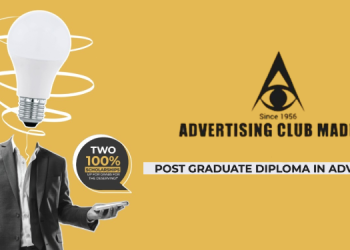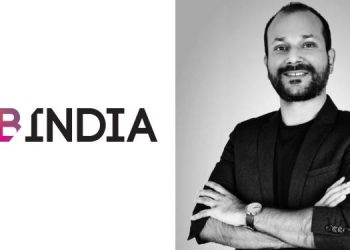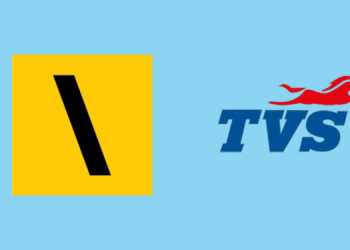The ongoing pandemic has caused a dynamic shift in advertising, promotions, and media spending. This in turn has created a requirement for businesses and brands to rethink their existing and future strategies to retain a continuous stream of income. While companies are presently attempting to strike the appropriate tone amid this huge health catastrophe, there will be more competition as well as a desire for creative marketing techniques in the future years.
‘Click Through Rate’ refers to the number of clicks you receive divided by impressions; simplifying what this means is CTR is the number of times your content is displayed. You ideally want your campaigns to have high CTRs because when more people click to view your content and learn more about your business, they will be more likely to purchase your product/ service. It’s crucial to monitor CTR because it affects other aspects of your campaigns as well.
As the performance marketing head at Django Digital, I understand the struggle to hit the right note from a content perspective, for a good CTR.
There are 5 parameters that are crucial as per the experience I have garnered in the industry while trying to crack the right creatives to drive a better CTR.
Relatability helps drive higher traction:
This entails tailoring your message to the appropriate audience. For example, if you’re targeting business professionals with a tea brand, then make sure you’re showcasing a professional who is sipping on tea while working. This is what helps drive higher click-through rates because people find it relatable to their daily lives – that automatically helps drive higher traction.
Focusing on the right message to the right audience:
It is integral to account for the right type of target audience that needs to be defined thoroughly, only after which the right kind of creatives can be created. For example, if you’re marketing a jewelry brand to millennials rather than baby boomers, and you’re presenting a lifestyle picture of someone wearing the product, you would want to showcase a younger-looking model wearing the product, such as an earring or a bracelet. Whereas, if you’re targeting an older age group, you should use a model who is much older and then promote which helps showcase the brand’s dynamic range across demographics.
A/B testing videos vs images to understand the performance of each towards an audience:
The good thing about promoting a video is that you can make sure that you re-target the people who have watched your video. It helps performance marketers like myself to build another pool. Today, we can safely say that video format is king; it is storytelling, it has a much bigger message that you can push out as well, whereas, with a static format, you focus on something simple, to the point. Statics or images are more sales-focused or sales-driven than videos.
Collectively, it all comes down to what a brand wants to promote, whether it’s the story behind the entire brand or whether they want to drive sales or a combination of the two.
From a performance marketing perspective, we prefer to focus on storytelling when it comes to the broader audiences whereas, when you’re focusing on somebody who is narrowed down, or who has shown intent towards your brand then you show them product-focused, product-led images and this is where a/b testing comes into the play as well, where you understand what the audience is more fruitful for which creative type – a video, a gif or an image.
Focus on broad, yet qualified, audiences:
Imagine you’re a new brand trying to promote a business perhaps on Facebook, Google, or any other social wall/ platforms and you haven’t defined your audience yet. So you keep a/b testing these different audiences, but you also want to make sure you go after broader audiences because it allows each platform algorithm to auto-optimize and finds the most likable/relatable audience to the mix of it or most qualified audiences.
For example, if a tea brand wants to promote tea to its audience, the focus should not only be on targeting consumers who are interested in tea. The brand can go a notch up and also target people having strong attributes towards tea, it could be a working professional or someone who is a household/home-maker, and even someone who might be focused on coffee for that matter because few folks might like coffee and tea.
If you’re promoting tea from a premium brand, then your ideal target should be consumers who prefer high-quality goods, an example could be someone who owns an Apple device. This all comes into play because, in India, approximately 3% of smartphone users own an Apple device. As a result, targeting these types of specific audiences will more likely give a brand more traction, because it is a qualified audience with a higher purchasing power, This gives us an insight into understanding that to promote/sell a premium-priced product, a brand should rather focus on targeting consumers who can afford premium kind of products
Following ‘creative best practices’ helps increase creative ranking:
Each platform has its own ‘best creative practices’. It is important to ensure that you give the user experiences like; full-screen experience by using different dimensions for different placements, creating videos with sound off as it has been observed that many consumers watch videos in that mode. Hence, we need to make sure we give our users a seamless approach through any video or ad that comes into their feed.
Lately, Instagram reels are coming into the mix of it now; a lot of advertisers are trying to be product/sales heavy with Instagram reels. However, that doesn’t work; what works best is focusing on a very seamless approach, making sure that people find content relatable be it influencer-led or maybe just human/customer feedback will help build your relatability and give you better creative ranking.
Best creative practices can be making sure that your message is to the point. This means showcasing the brand’s logo in the first 3 seconds of a video in the video creative and being, straight to the point because a user’s attention span when they’re browsing through social platforms is very very minimal, so your creatives need to be spanned out for them to look, pause and move on.
In conclusion, CTR doesn’t have to be everything for measuring the success of your ad. But it’s still important to get the best CTR possible for the most effective ads. When it comes to improving the ad content, the right audience, the right kind of target for those audiences, and a/b testing are important.
Authored article by Vivek Shah, Partner and Performance Lead, Django Digital.

















